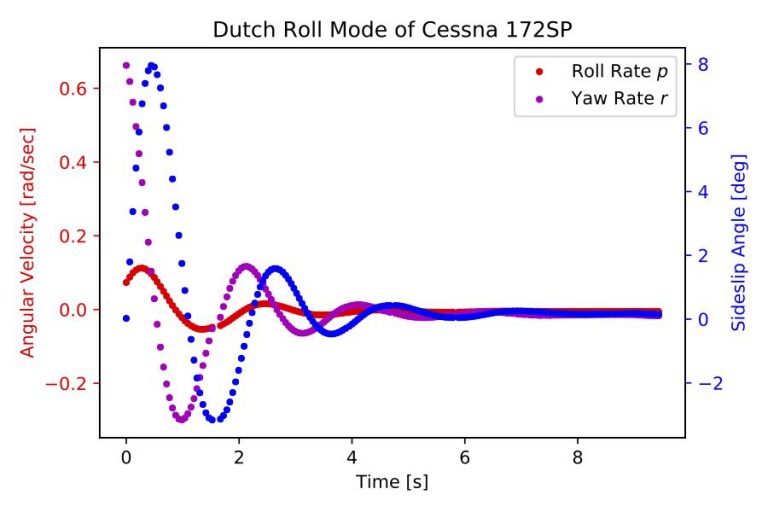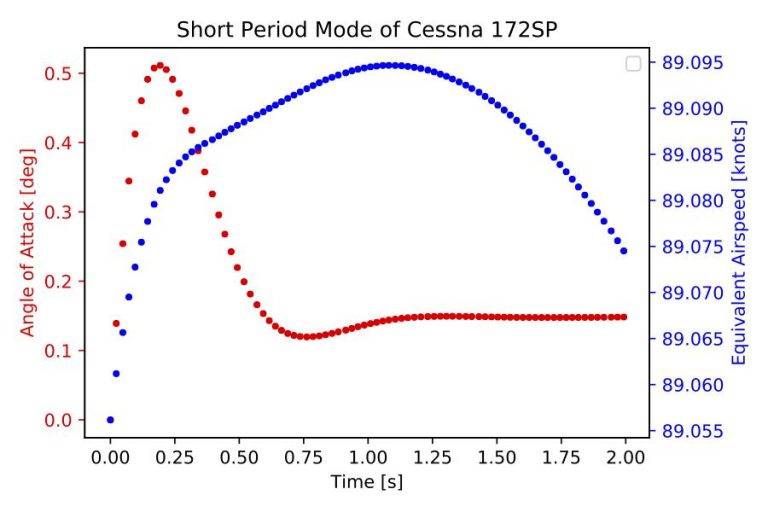Introduction
Our Airplane Stability and Control (Flying Qualities) Course takes the methodical and formal approach of test pilots to study the stability and controllability of your aircraft. You will develop a much refined perception and understanding of airplane response to your control inputs. Furthermore, this course will familiarize you with the whole performance envelope of your airplane which can be legally explored.
This course is similar to the Flying Qualities part of our Upset Prevention and Recovery Training (UPRT) Course, but it is shorter, and can be completed in airplanes of your choice, including your own (they do not have to be aerobatic). The emphasis is not on conditioning you how to recover from unusual attitudes, but rather on flying qualities and exploring how different aircraft behave, and what lessons we can draw from those observations for critical situations.
Course Content
Theory
- Terminology (Labeling of Quantities: axes, velocities, accelerations, forces, moments, etc.)
- 2-Dimensional Aerodynamics (Airfoils – infinitely long wings)
- 3-Dimensional Aerodynamics (Wings – of finite length)
- Geometry and Physics (Reference Frames, Euler Angles, Body Rates, Rotational Physics, Equations of Motion)
- Fundamentals of Aircraft Stability and Control (Linearization of Equations of Motion, Stability and Control Derivatives)
- Longitudinal Static Stability (e.g. Stick-Fixed and Stick-Free Neutral Points)
- Lateral-Directional Static Stability (Turning Flight and Slips; Roll Damping, Adverse Yaw, Cross-Coupling, Dihedral Effect (geometric dihedral, wing sweep, wing tip vortices), Yaw Damping, Overbanking Tendencies, etc.)
- Maneuvering Stability (Longitudinal Stability during Pull-Ups and in Turns; e.g. Stick-Fixed and Stick-Free Maneuver Points, Pitch Damping)
- Longitudinal Dynamic Stability (Short Period and Phugoid Modes)
- Lateral-Directional Dynamic Stability (Roll Mode, Spiral Mode, Dutch Roll Mode)
- Stalls and Departure from Controlled Flight (Note: Spins and Inertia Coupling are covered in a separate course, but can be added here upon request)
Video showcasing Point 6 in the list of practice items below: stalls from slipping and skidding turns for two different aircraft.
Practice
- Longitudinal Dynamic Stability (short period mode, phugoid mode)
- Lateral-Directional Dynamic Stability (roll mode, spiral mode/instability, Dutch roll mode)
- Maneuvering Stability (increased longitudinal stability during pull-ups and turns)
- Stalls and Stall/Spin Awareness (incl. effect of ailerons and rudder; student practice of botched stall attempts, resulting in spin entry)
- Accelerated Stalls (stalls at 45-degree bank angles with recovery to both wings level and while continuing the turn)
- Susceptibility for Departure (stalls from uncoordinated flight, including slipping and skidding turns – see video above)
- Roll Dynamics and Authority (aileron vs rudder effectiveness at different airspeeds (cross-over speed), yaw-roll coupling due to dihedral, etc.)
- Longitudinal Effect of Flaps: flap-induced, non-convergent phugoid
- Lateral Effect of Flaps
- Exploration of flight test techniques and flight test relationships to acquire a more refined perception of flying qualities
- Elevator/Aileron Failure (return from flight will be flown with rudder, trim and throttle only, without touching the stick, all the way down to short final).
- Optional: Rudder and Aileron Hardovers
- Optional: Engine Failure after Takeoff Turnaround Maneuver (is in principle a separate short course)
Whom is this course for?
This course is for every pilot who would like to have a more refined and formal understanding of airplane response to control inputs. It is in essence like learning grammar in elementary school, after you have spoken the language intuitively for years as a child already. You learn the grammar in order to be able to use the language more expertly and in more intricate ways.
If you go into the woods, the bird songs are one beautiful cacophony. You are unable to distinguish individual birds and species, unless you have studied the songs of birds beforehand (e.g. by listening to individual recordings). If you do study them, suddenly you pick up subtleties you never imagined were there.
This Stability and Control (Flying Qualities) Course serves the same purpose as your English class in elementary school or the ornithology course for birders. Except that it will be a little bit more exciting, as we will throw around differential calculus first and then go do an activity at fatal speeds and altitudes, becoming birds ourselves.


